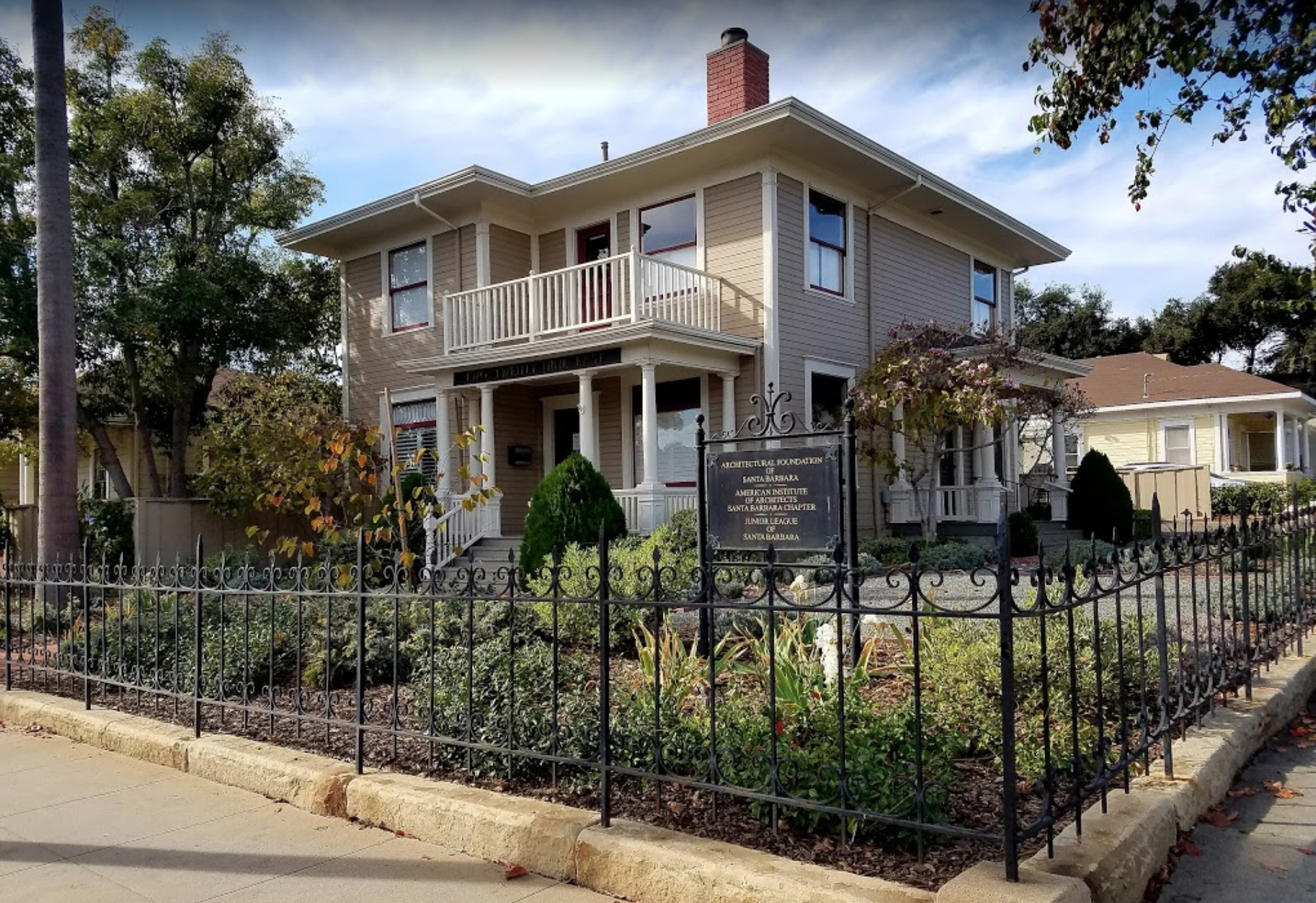About AIA Santa Barbara

The American Institute of Architects was established in 1857, the year that James Buchanan was sworn in as the 15th president of the United States and John B. Weller was elected the fifth governor of California. Ten years later, in 1867, the AIA had grown large enough to hold its first national convention in New York City. Although the population of Santa Barbara at that time was only around 2,000, newcomers from the east had begun to arrive in 1848, and they chose to build homes that were reminiscent of the ones they had left behind. As a result, adobe construction slowly gave way to wood. Stearns Wharf, completed in 1872, made it easier to import lumber, and the transition to wooden structured quickened. Victorian became the city’s architectural style of choice, mimicking developments in San Francisco.
Prior to 1929, members of the Institute were assigned to the Southern California Chapter out of Los Angeles. Support and inclusion were difficult given the travel distance to the LA area from central coast counties. In 1928, a small group of members led by Winsor Soule, FAIA worked to create a local chapter to include San Luis Obispo, Santa Barbara and Ventura counties. The chapter formation team of Winsor Soule, John Frederick Murphy, T. Mitchell Hastings, George Washington Smith, and Russell Ray worked with the Southern California Chapter and National AIA to create the bylaws and Chapter documents that were approved by the National AIA Board on April 27, 1929. Around 1965, San Luis Obispo and Ventura Counties became chartered chapters. The Santa Barbara Chapter area was reduced to just the county of Santa Barbara. Throughout its 90 year history, the AIA Santa Barbara has grown, promoting intelligent architecture, support of global issues such as sustainability and environmental management; national issues such as historical documentation of buildings, design for health and accessibility, disaster recovery, and a schedule for reaching net zero building energy use; and local issues such as archives of plans, consultation on ordinances, and public recognition of quality built works.
The year 1969, designated a Celebration of Architecture by AIA National, was an exemplary one for the AIA Santa Barbara. Public programs and seminars displayed the design of local architects, and an award for local architectural excellence was established as the highest honor of the chapter. It was presented to Lutah Maria Riggs and subsequently named after her.
Recognizing the AIASB’s potential to reach a broader audience, members created the Architectural Foundation of Santa Barbara (AFSB). A donation allowed AFSB to secure for itself and the AIASB a permanent home on the corner of Victoria and Garden streets, which also serves as the AFSB’s Art Gallery. Together, AIASB and AFSB compose a partnership that is unusual for a community as small as Santa Barbara. Most architectural foundations are located in larger metropolitan areas such as San Francisco, New York, and Chicago.
Adapted from AIA Santa Barbara’s Architecturally Speaking Column “History of AIA Santa Barbara Chapter” written by Bill Mahan, Dennis Whelan, Jeremy White, and Dan Johnston
About the Chapter House
In 1990, through the gift of Pierre Claeyssens to the Architectural Foundation of Santa Barbara, the historic Acheson House became the headquarters of the Architectural Foundation and the AIA Santa Barbara Chapter. This distinguished example of Victorian Italianate residential design was originally built in 1904 for James J. Acheson. Centrally located in downtown Santa Barbara, the Acheson House is the focus for the Foundation’s and Chapter’s many activities.
Come here to browse through our library of architectural books or view the current art exhibit in the gallery. The office is available for committee and membership meetings by advanced reservation.
About The American Institute of Architects
Founded in 1857, the American Institute of Architects consistently works to create more valuable, healthy, secure, and sustainable buildings, neighborhoods, and communities. Through nearly 300 state and local chapters, the AIA advocates for public policies that promote economic vitality and public wellbeing. Members adhere to a code of ethics and conduct to ensure the highest professional standards. The AIA provides members with tools and resources to assist them in their careers and business as well as engaging civic and government leaders and the public to find solutions to pressing issues facing our communities, institutions, nation and world. Visit www.aia.org.
